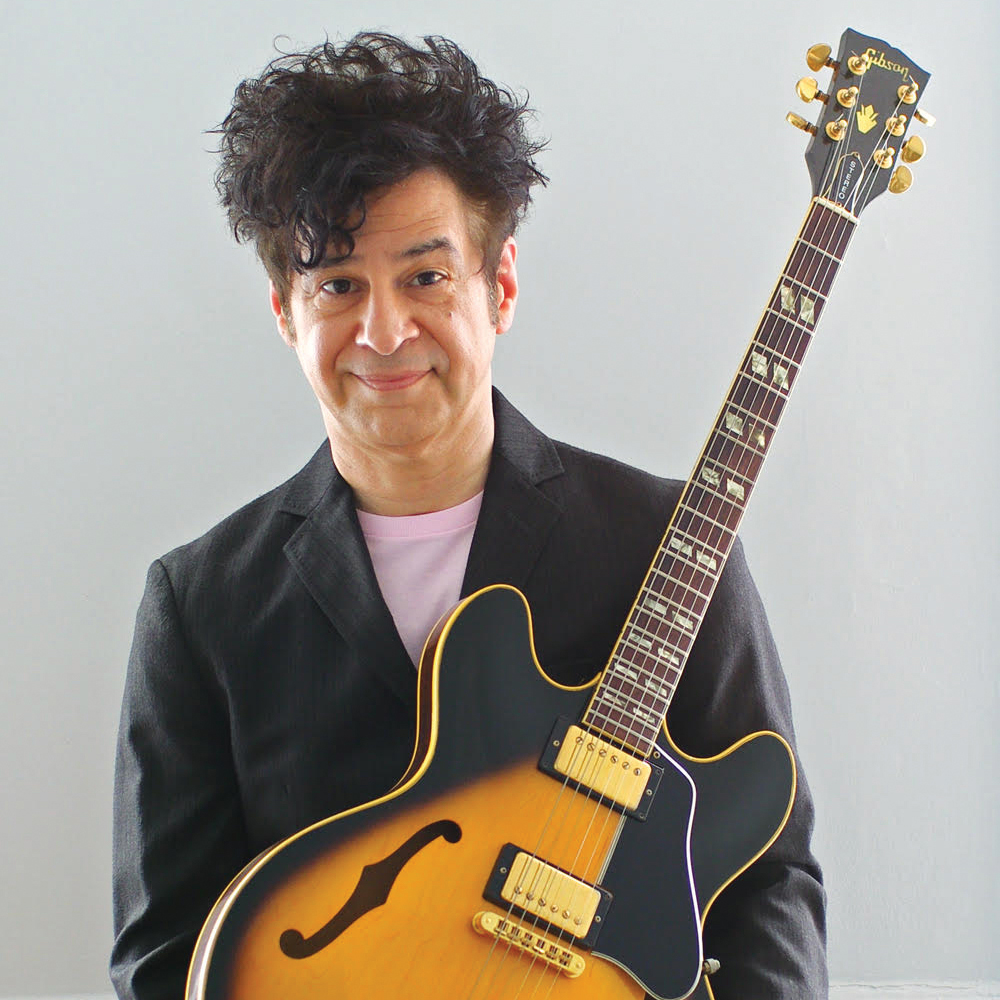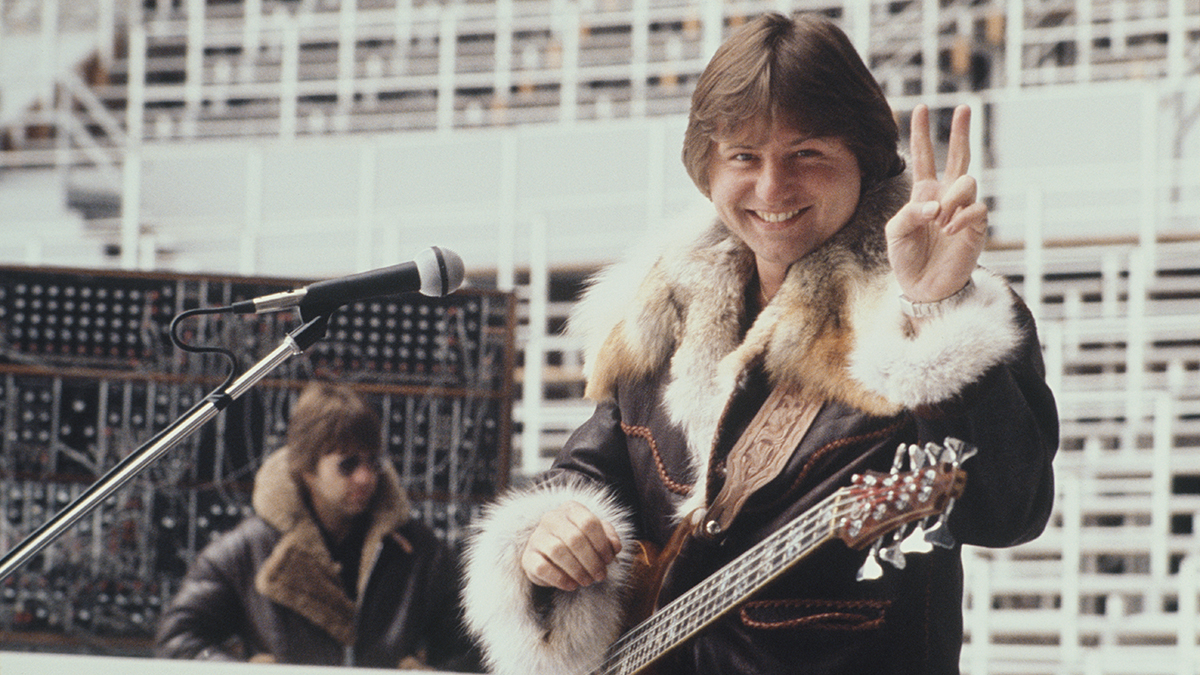The Beatles' 50 greatest guitar songs
Charting George Harrison, John Lennon and Paul McCartney's very best six-string moments from the Fab Four's sprawling catalog
40. Help!
Album: Help!
The Beatles’ mix of acoustic rhythms and electric guitar leads from 1964 through the end of 1965 helped greatly to define the sound of folk-rock. Written in the midst of his “Bob Dylan phase,” Help! shows Lennon continuing to divulge the vulnerability express on previous songs like No Reply and I’m a Loser, with the acoustic guitar providing the requisite balladeer instrumentation.
Here, Lennon robustly strums out the rhythm on his 1964 Framus Hootenanny 5/024 acoustic 12-string, with Harrison contributing jangly lead lines and three-note descending passages on the choruses with his Gretsch Tennessean.
39. Dear Prudence
Album: The Beatles (1968)
This 1968 composition is arguably one of Lennon’s greatest achievements as a guitarist and demonstrates his development at the time into a bona fide acoustic fingerpicker.
Having recently learned a basic eighth-note Travis-picking-like pattern from British pop star Donovan, Lennon put the newly learned pattern to great use in compositions like Julia, Happiness Is a Warm Gun and, most brilliantly, Dear Prudence, applying it to an ethereal modal chord progression he invented, which he performed in drop-D tuning (low to high, D A D G B E), using the two open D strings (the fourth and sixth) as ringing drones, or pedal tones throughout the majority of the song.
The thumb-picking pattern goes fifth string, fourth string, sixth string, fourth string and repeats consistently through the changing chords, interrupted briefly at the end of each verse.
All the latest guitar news, interviews, lessons, reviews, deals and more, direct to your inbox!
38. If I Needed Someone
Album: Rubber Soul (1965)
Although the Beatles were rock’s foremost trendsetters, they still were influenced by other artists. Case in point: George Harrison’s 12-string riff on If I Needed Someone. Played in a second-position D-chord shape with a capo on the seventh fret, the line was based on Jim McGuinn’s chiming guitar work in the Byrds’ mesmerizing 1965 track The Bells of Rhymney.
In the mid '60s, Harrison and McGuinn had formed a mutual-admiration society: If I Needed Someone featured Harrison’s second Rickenbacker 360/12, a rounded-off 1965 model that resembled McGuinn’s 1964 Rickenbacker 360/12, which McGuinn bought after seeing Harrison’s first Rick in the film A Hard Day’s Night.
37. Day Tripper
Album: 1962–1966 (1973)
Lennon and McCartney’s hip-shaking 1965 hit is a thinly veiled ode to “weekend hippies” who embrace the drug counterculture when they’re not pursuing their careers. McCartney referred to this song and Drive My Car (recorded just days earlier) as “songs with jokes in” them, but there’s nothing laughable about this track’s swaggering guitar riff, borrowed from the Temptations’ 1964 hit My Girl and given a liberal dose of self-assured attitude.
Lennon reportedly plays the solo, most likely using his Sonic Blue Fender Strat, while Harrison’s guitar parts were probably recorded with his Gretsch Tennessean.
36. Think For Yourself
Album: Rubber Soul (1965)
The Beatles had been interested in creating distorted guitar tones since at least 1964, when they attempted unsuccessfully to use a Gibson Maestro Fuzz-Tone on She Loves You and Don’t Bother Me (see entry 23).
They were more successful with Harrison’s excellent 1965 composition Think for Yourself, for which McCartney plugged his Hofner bass into an early version of the Tone Bender fuzz pedal, created by electronics designer Gary Hurst and eventually marketed by Vox. The result is the harsh-sounding “lead bass” tone that bobs menacingly – and memorably – alongside Harrison’s lead vocal.
35. Mother Nature's Son
Album: The Beatles (1968)
Throughout this song’s verses, McCartney fools you into thinking that he’s playing more than he actually is by filling out the harmony with his vocal melody. For example, while the ear hears a very strong D-to-G movement in the first two bars of the verse, all McCartney is actually playing is D to Dsus4; his vocal melody intimates the G chord by moving to B, that chord’s third.
The verse also features, in the third and fourth bars, brilliant oblique motion – where one voice moves up or down while one or more other voices remain stationary. By moving the root of a B minor chord, B, down to the minor seventh, A, and then down to the sixth, Gs, while keeping the notes D and F# constant above this descending line, McCartney implies a slick progression of Bm D (or Bm7) E9. He does the same thing at the very beginning of the song.
34. Girl
Album: Rubber Soul (1965)
Lennon conjures up this song’s dreamy, Gypsy-like reverie by capoing his Gibson J-160E at the eighth fret, making the guitar sound similar to a mandola. Harrison furthers the vibe on the third verse, playing a mandolin-like melody on Lennon’s Framus Hootenanny 12-string acoustic.
But the crowning touch comes at the coda, when a third acoustic guitar enters, playing a Greek-style melody that’s plucked at the bridge with sharp strokes, making it sound like a bouzouki and further emphasizing the song’s smoky, old-world aura. The British group the Hollies would copy the effect on their hit Bus Stop, recorded at Abbey Road some six months later.
33. Birthday
Album: The Beatles (1968)
Like I Feel Fine and Day Tripper (see entries 12 and 37), Birthday delivers a classic and memorable guitar riff. Whereas those previous two songs veered from the traditional 12-bar blues formula, Birthday hews closely to it during its verses.
McCartney and Lennon wrote the song in the studio during an evening session, which included a recess during which the band went back to McCartney’s house to watch a TV broadcast of the 1956 teen film The Girl Can’t Help It. The soundtrack – which included performances by Little Richard, Gene Vincent and other Beatles’ favorites – undoubtedly contributed to the song’s raucous vintage rock-and-roll vibe.
32. One After 909
Album: Let It Be (1969)
This tune had been in the Beatles’ song bag for years, surfacing first as a rickety blues-style shuffle at a March 1963 recording session.
By the time they tackled it again during their January 1969 rooftop performance at Apple, the Beatles were nearly finished as a group, but they were at long last able to breathe life into the tune, revving it up with a rock and roll beat and laying into it like the seasoned performers they were. Harrison delivers a stellar country-rock solo, using his rosewood Telecaster.
31. Norwegian Wood
Album: Rubber Soul (1965)
This acoustic-rock masterpiece, written by Lennon, is not unlike Here Comes the Sun (see entry 4), in that it’s a folky chord-melody type of accompaniment that could easily stand on its own as a solo instrumental, with the vocal melody conveniently woven into the chords.
However, unlike Here Comes the Sun, the melody sits in the middle, rather than on top, of the chord voicings, and is performed with more full strumming in a flowing 6/8 meter.
Lennon performed Norwegian Wood as if the song were in the key of D, the verses being in D major and the bridge sections switching the parallel minor key of D minor, and used a capo at the second fret to transpose everything up a whole step, to E major and E minor, respectively.
Christopher Scapelliti is editor-in-chief of Guitar Player magazine, the world’s longest-running guitar magazine, founded in 1967. In his extensive career, he has authored in-depth interviews with such guitarists as Pete Townshend, Slash, Billy Corgan, Jack White, Elvis Costello and Todd Rundgren, and audio professionals including Beatles engineers Geoff Emerick and Ken Scott. He is the co-author of Guitar Aficionado: The Collections: The Most Famous, Rare, and Valuable Guitars in the World, a founding editor of Guitar Aficionado magazine, and a former editor with Guitar World, Guitar for the Practicing Musician and Maximum Guitar. Apart from guitars, he maintains a collection of more than 30 vintage analog synthesizers.

